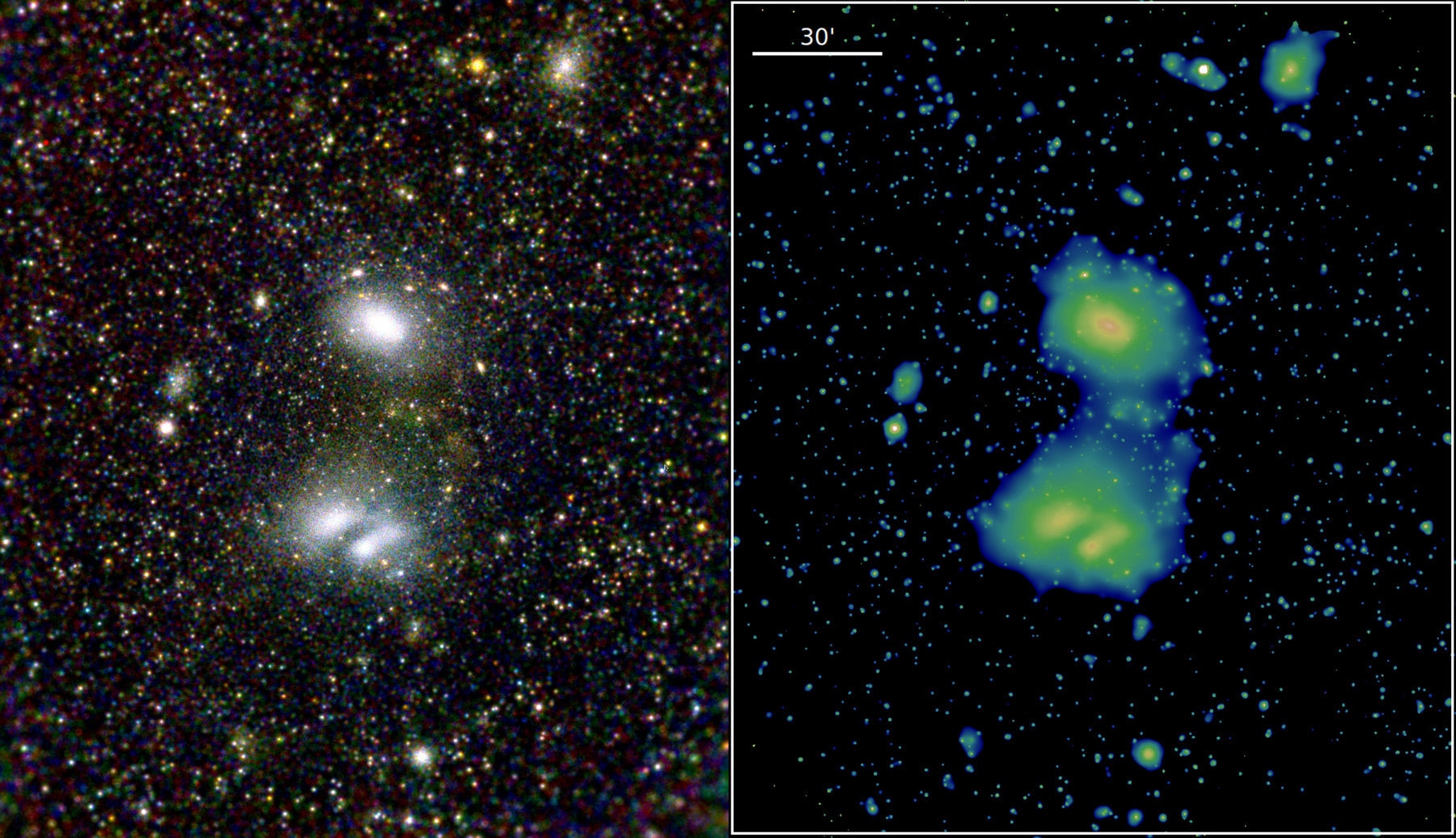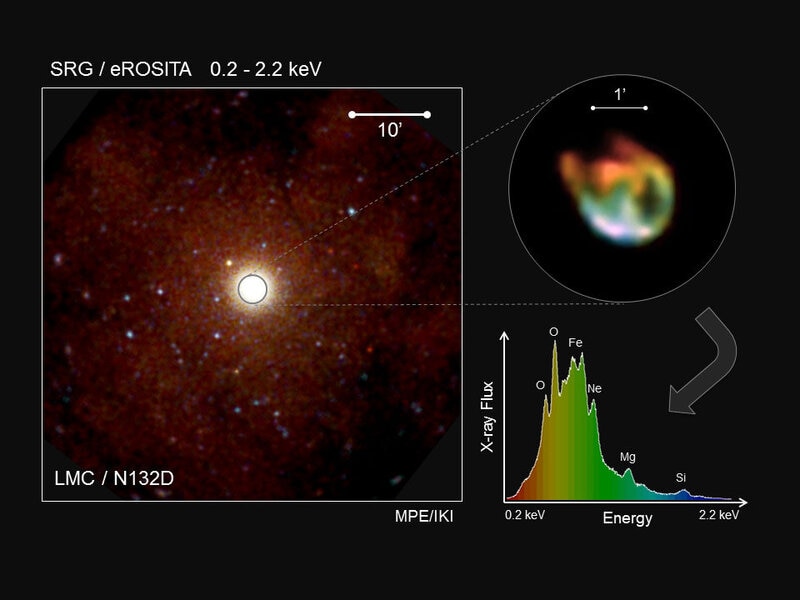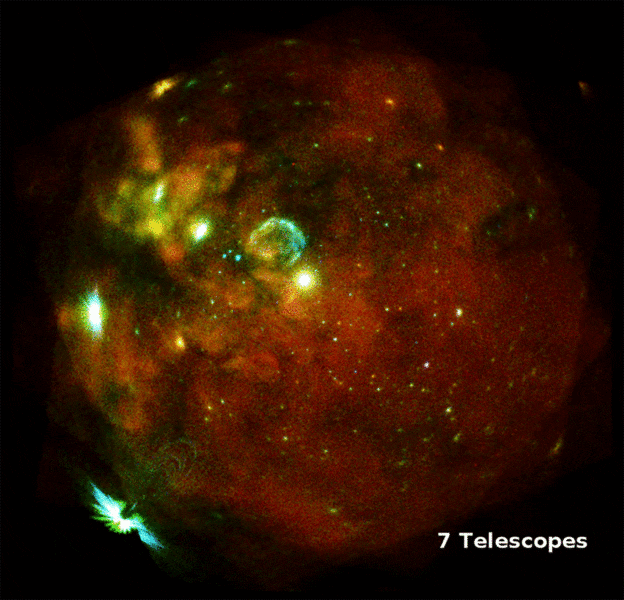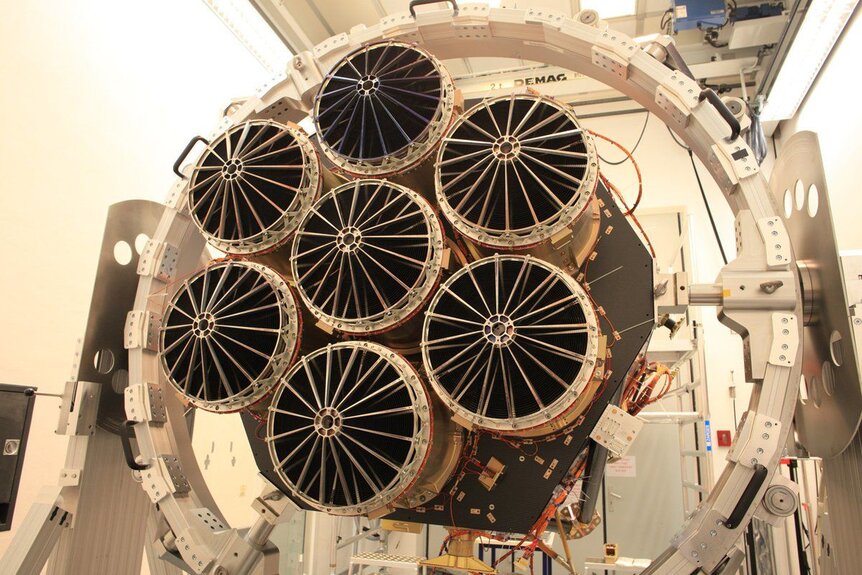Create a free profile to get unlimited access to exclusive videos, sweepstakes, and more!
eROSITA is now scanning the skies for X-rays

It's a rare pleasure to announce that a new astronomical satellite is scanning the skies, but today is such a day: eROSITA is now orbiting the Sun and scanning the sky in X-rays!
eROSITA stands for extended ROentgen Survey with an Imaging Telescope Array. It's a collaboration between Russia and Germany (Wilhelm Röntgen, sometimes spelled Roentgen, discovered X-rays in 1895 and his patronymic was used as an old style unit of X-ray radiation), and is a survey telescope, designed to scan the entire sky over its nominal 7-year mission. It just had "first light", meaning its first observations, and those have now been released.
X-rays are emitted by high-energy events: exploding stars, extremely hot stars, black holes gobbling down matter, and so on. A big source of cosmic X-rays is gas that exists between galaxies in galaxy clusters. These clusters are the some of the largest coherent structures in the Universe, and were among the first things to form in the early Universe.
This makes them interesting bellwethers for cutting-edge physics. Gravity dominates their structure, and while some of the gravity between galaxies and clusters is due to normal mater, it's dominated by dark matter, the invisible stuff that we know exists but cannot directly see. Moreover, because they formed so early, the distribution of galaxy clusters in the Universe tells us about the geometry of the cosmos, the overall way spacetime itself behaves. This is dominated by dark energy, which again we cannot see directly but has vast, overarching effects on the Universe. We know the Universe is expanding, but that expansion is accelerating due to dark energy.
Observing clusters of galaxies thus gives astronomers huge insight into two of the biggest drivers behind the way the Universe behaves, both of which we cannot directly detect! eROSITA will map out and measure the incredibly hot gas inside and between clusters, which tells us the cluster mass, which is the key to understanding everything else.
For example, here is an eROSITA observation of two interacting galaxy clusters:
At the top is Abell 3391, and below it is Abell 3395 (which itself has two cores). Each of these is a vast cluster containing thousands of galaxies (which aren't visible individually here), and both lie at a distance from Earth of about 700 million light years. These two clusters are interacting, as can be seen by the presence of extremely hot gas bridging between them. Images like this will allow astronomers to understand these interactions better, and use them to get a better handle on dark matter and dark energy.
eROSITA not only can detect X-rays, but has seven different telescopes that see them in different energies — think of it like colors of X-ray light. That's critical, because it means astronomers can identify what kinds of elements are emitting the light. Just like a visible light spectrum can be used to determine the elements in a gas cloud, an X-ray spectrum does this for various elements too, like iron, oxygen, and calcium (common in exploding stars). This is critical for understanding how much energy is in the object emitting X-rays as well as the composition.
I am impressed by how big a piece of the sky it observes, too. That's critical for a survey mission whose task is to eventually map out the entire sky, of course! But it's still cool to see it in action. This is an image of the Large Magellanic Cloud, a satellite galaxy of the Milky Way, and it covers an area several times the size of the full Moon on the sky:
The animation shows the observation blinking with the various X-ray sources labeled. The really bright one in the center is SN1987A, a supernova whose light reached Earth in February 1987. It's still very bright in X-rays, as the debris from the huge explosion slams into gas around it, heating it to millions of degrees. Other sources in the image include active galaxies (labeled AGN; where black holes are eating lots of material), stars (with their distance given in parsecs), nebulae, and what are potentially stellar-mass black holes orbiting normal stars (labeled HMXB, for high-mass X-ray binary). It's clear that eROSITA can see a lot of different kinds of objects, which is another of its main mission goals.
One more thing: X-ray telescopes are… well, weird. You can't focus X-rays like you can visible light. High-energy X-ray photons pass right through mirrors! So instead of reflecting them, X-ray telescopes gently guide them to a focus using grazing incidence mirrors. Think of it this way. If you drop a rock into water it just sinks. PLONK! But it you throw it at a very shallow angle, the rock skips off the water, moving upward.
X-ray mirrors do the same thing. They are set at a very shallow angle to the incoming X-rays, so the photons hit the mirrors and skip off them, changing their angle very slightly (that's the grazing incidence part). If you nest a series of these mirrors with slightly different angles as you move further down the telescope, the X-rays skip off each one, and are guided into the detector. It's a weird way to focus light, but it's an idea that's been around for a long time (Chandra and XMM-Newton use the same kind of tech).
The point is, it's not easy capturing X-rays for analysis! I guess if you want to understand the weird parts of the Universe, you need a weird telescope to do it. eROSITA and its kin are technological marvels, and they also happen to be extraordinarily useful in helping astronomers understand the nature of the mysterious dark stuff that dominates everything in the cosmos. It'll be interesting and exciting to see what it will do over the next few years.






























